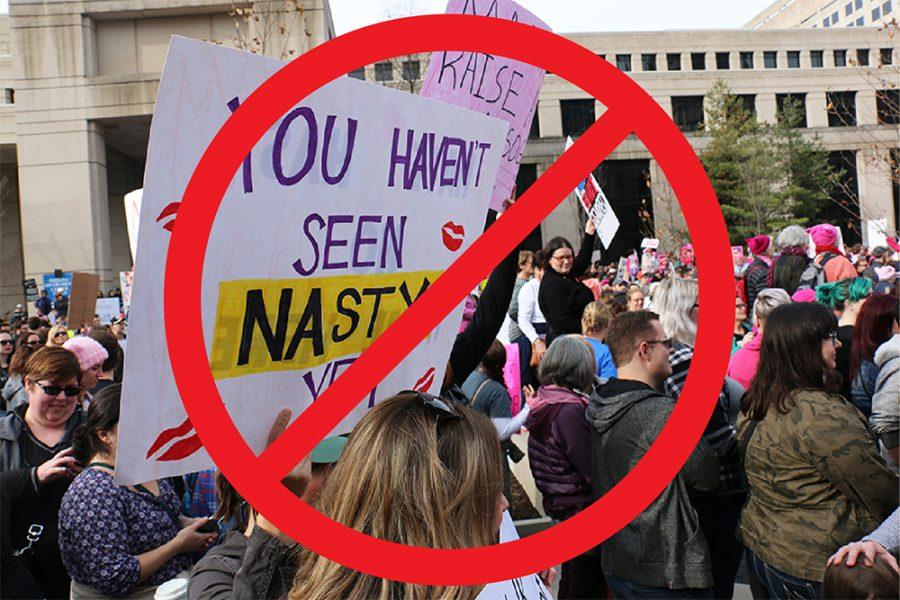Women’s March Opposers: The Argument
February 9, 2017
These past few weeks, newspapers and magazines have been flooded with the same imagery that slides across your television screen nearly every night-of women, men and children massed in the hundreds and thousands in front of government buildings with signs, capes and pink knit hats with built-in cat ears.
The so-called “Pussy Hats” are the symbol of the modern women’s movement. Started after choice comments from former Presidential Candidate Donald Trump in which he alluded to grabbing women by their vaginas, the Pussy Hat campaign included making donations to women’s health institutions like Planned Parenthood in the name of Trump and his former running mate Indiana Governor Mike Pence.
On January 21, the day after Donald Trump was sworn in as America’s 45th President, people across the world gathered peacefully to demonstrate solidarity and to let President Trump know that he would not be allowed to do whatever he wants as President. It was a show of force on a massive scale that did not warrant a single arrest or detainment in any of its locations, setting a precedent for following demonstrations in the name of equality.
But many people – women included – do not believe the marches were necessary or appropriate. It is these women in particular, the ones that condemn their sisters and mothers and daughters for participating in the movement, that are gaining attention in the days and weeks after the March. They publish extended, vehement rants on social media websites like Facebook in various forms; one woman from Ohio just last week published a letter “To My Future Daughter” that quickly went viral.
The letter gained popularity especially among Conservative women, who identified with the damaging rhetoric that blames women for “choosing” lower-paying jobs, citing an article of unknown origin that supposedly included a graph of the number of women choosing to stay at home and raise their kids, while their counterparts worked outside of the home, in order to erase the idea of a gender-based wage gap.
Among other things like a condemnation of women who have abortions and a highly critical assault on childless women, the letter also included an outdated list of “Women’s Work”, which praised stay-at-home moms and criticized women who work outside the home.
So that is what they did, but the real question is why they did it. Why would any woman criticize a movement that aims to improve her life, and maybe even the life of her daughter? On a global scale we see this, the corruption of women’s autonomy – in other words, women are taught to ignore their own needs and values in favor of those possessed by their male counterparts, even if they directly contradict their own in the process.
This is a common problem, one that spans centuries and generations and one that does not discriminate across cultures. In some parts of the Middle East a single disposable pad can cost upwards of 4 USD, and in Africa women are forced to conceal their menstrual cycles to avoid physical assault or shunning. Even in America, where we like to call ourselves progressive, people feel the need to conceal their femininity or inner turmoil in order to preserve a long-held image of purity or desirability.
That begs the question, are women wrong for protesting the protest? Should they be blamed for the perpetuation of misogynistic ideals? Perhaps, in the name of inclusion, we should instead treat them the same way we wished to be treated – with complete autonomy and the room to “choose” their own lifestyles.
The views expressed in this article do not necessarily reflect the views of The Oracle, Columbus East High School, and Bartholomew Consolidated School Corporation.







